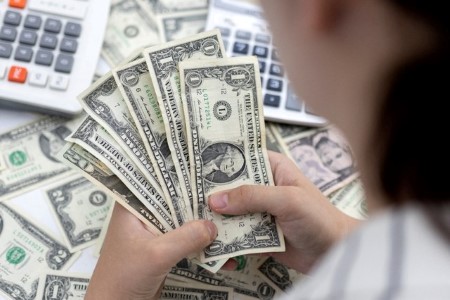




Quarterly Economic Growth Release: More BSP cuts to come
 DOWNLOAD
DOWNLOAD

Monthly Economic Update: Fed catches up
 DOWNLOAD
DOWNLOAD

Inflation Update: Steady and mellow
 DOWNLOAD
DOWNLOAD


US yields hit 4% for 1st time in 2 months; yield curve briefly inverts

NEW YORK – The benchmark US Treasury 10-year yield topped 4% for the first time in more than two months on Monday, while a widely watched part of the yield curve briefly inverted, as markets reduced bets of another super-sized rate cut following Friday’s strong US jobs report.
Investors were also prepping for USD 119 billion in auctions of the US three-year and 10-year notes, as well as 30-year bonds. That has led to some concession, which means market participants have been selling Treasuries, pushing their prices lower and yields higher, and buying them back later after the auction.
In afternoon trading, the 10-year yield rose 3.9 basis points (bps) from late Friday to 4.019%, advancing for a fourth straight session after hitting its highest level since late July of 4.033%. It rose 13 bps on Friday, its biggest one-day rise since June 30, after news the US economy added 254,000 jobs in September, above the expectations of economists polled by Reuters. The unemployment rate surprisingly fell to 4.1% from 4.2%.
The US two-year yield, which is more sensitive to changes in monetary policy expectations, reached its highest since Aug. 19 at 4.0270% and was up 7.4 bps at 4.006%. It rose almost 22 bps on Friday, its biggest daily rise since April.
“At this point, we are still in a cutting cycle. From the market’s perspective, I still believe the Fed is going to deliver a couple more eases this year,” said Angelo Manolatos, macro strategist, at Wells Fargo. “What really ends up being the question is: how much are they cutting in 2025? There has been a rethink of the 25-bp easing from the market.”
The US rate futures market has priced in an 88% chance of a 25-bp cut next month, and 12% odds that the Fed will pause at according to LSE calculations. The market overall has also factored in 50-bp of easing for the remainder of the year.
Meanwhile, the bigger increase in yields on the two-year compared to that of the 10-year has briefly inverted the curve, flattening overall from a steepening scenario. The yield spread between the two-year and the 10-year hit minus 1.4 bps. It was last at positive 2.3 bps.
The flattening of the curve suggested that the market has reduced expectations of an aggressive rate-cutting cycle.
The Fed last month lowered the fed funds target rate to 4.75%-5.0% from 5.25%-5.5%, where it had been since the Fed stopped hiking rates in July 2023.
Gennadiy Goldberg, head of US rates strategy, at TD Securities in New York, said the selloff in Treasuries that brought key yields just above 4% could incentivize investors to add duration, once the market stabilized. Goldberg added that this week’s auctions could draw decent interest now that yields have backed up.
In other maturities, the 30-year bond yield rose 3.7 bps to 4.304%.
The main US economic release of the week comes on Thursday with the release of September’s Consumer Price Index. Inflation worries have given way to the strength of the labor market as a driver of Fed policy thinking.
“Inflation is back in the spotlight as the strength in the labor market and the economy are sparking some angst that the FOMC (Federal Open Market Committee) might have subtly declared victory too soon,” wrote Action Economics in a blog. “A benign report is generally expected for September, so hotter data would weigh further on the markets.”
(Reporting by Alden Bentley and Gertrude Chavez-Dreyfuss in New York; Additonal reporting by Samuel Indyk and Harry Robertson in London; Editing by Alun John, Dhara Ranasinghe, and Barbara Lewis)
This article originally appeared on reuters.com





 By Reuters
By Reuters